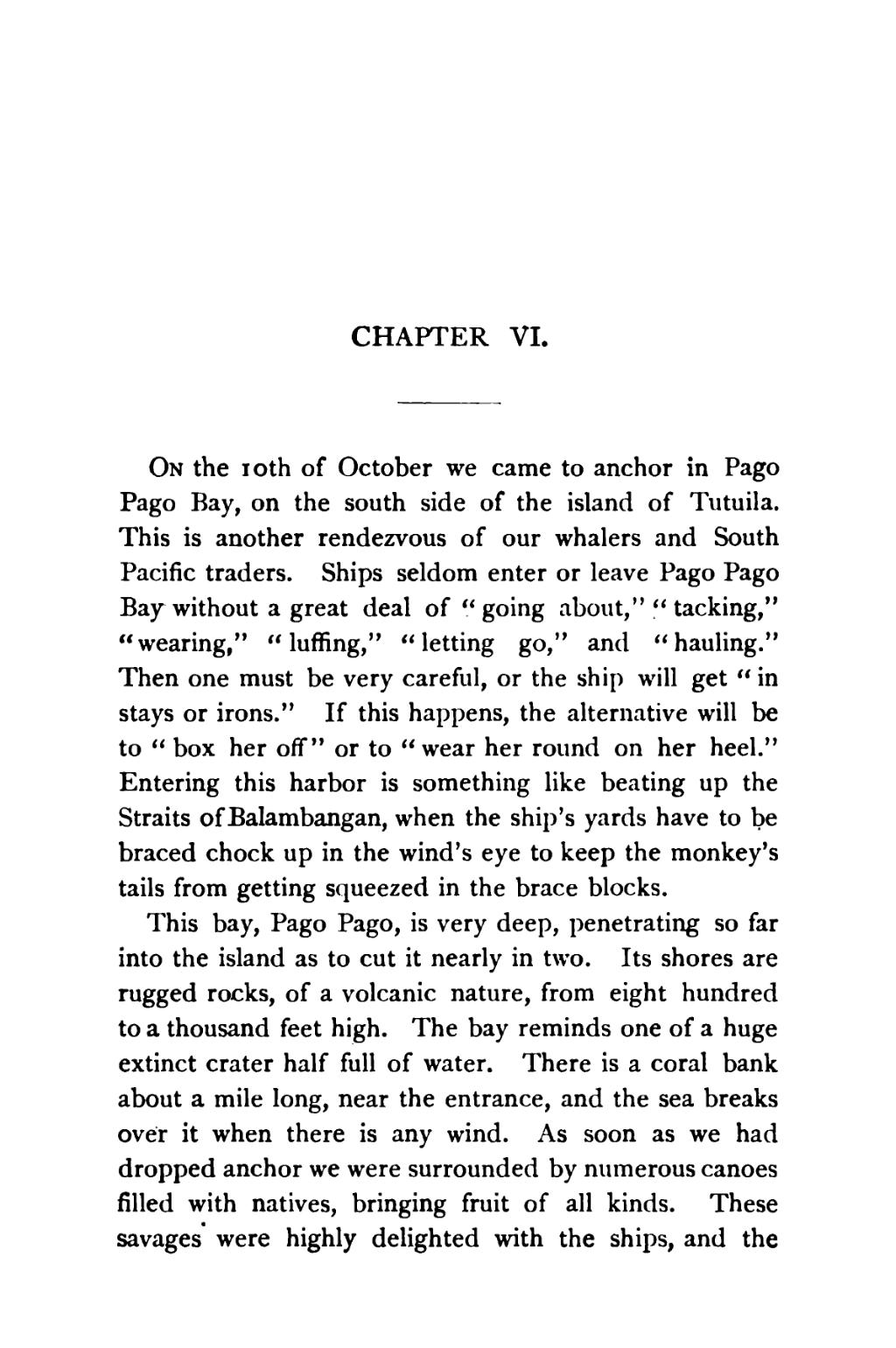CHAPTER VI.
On the 10th of October we came to anchor in Pago Pago Bay, on the south side of the island of Tutuila. This is another rendezvous of our whalers and South Pacific traders. Ships seldom enter or leave Pago Pago Bay without a great deal of "going about," "tacking," "wearing," "luffing," "letting go," and "hauling." Then one must be very careful, or the ship will get "in stays or irons." If this happens, the alternative will be to "box her off" or to "wear her round on her heel." Entering this harbor is something like beating up the Straits of Balambangan, when the ship’s yards have to be braced chock up in the wind’s eye to keep the monkey’s tails from getting squeezed in the brace blocks.
This bay, Pago Pago, is very deep, penetrating so far into the island as to cut it nearly in two. Its shores are rugged rocks, of a volcanic nature, from eight hundred to a thousand feet high. The bay reminds one of a huge extinct crater half full of water. There is a coral bank about a mile long, near the entrance, and the sea breaks over it when there is any wind. As soon as we had dropped anchor we were surrounded by numerous canoes filled with natives, bringing fruit of all kinds. These savages were highly delighted with the ships, and the
